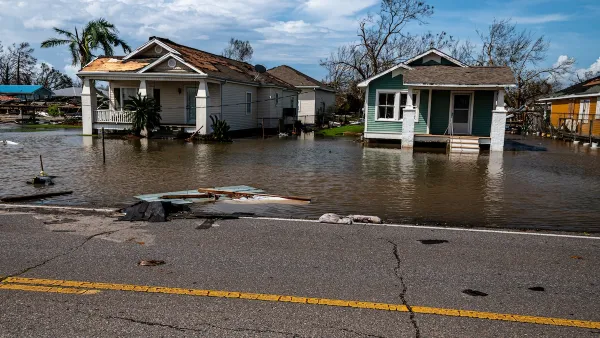Widely touted as a way of making America energy-independent, corn-based ethanol is instead a heavily subsidized, fossil-fuel dependent and environmentally destructive political boondoggle.
"[Ethanol] hype is dangerous [and] delusional. Ethanol doesn't burn cleaner than gasoline, nor is it cheaper. Our current ethanol production represents only 3.5 percent of our gasoline consumption -- yet it consumes twenty percent of the entire U.S. corn crop, causing the price of corn to double in the last two years and raising the threat of hunger in the Third World. And the increasing acreage devoted to corn for ethanol means less land for other staple crops, giving farmers in South America an incentive to carve fields out of tropical forests that help to cool the planet and stave off global warming.
Another misconception is that ethanol is green. In fact, corn production depends on huge amounts of fossil fuel -- not just the diesel needed to plow fields and transport crops, but also the vast quantities of natural gas used to produce fertilizers. Runoff from industrial-scale cornfields also silts up the Mississippi River and creates a vast dead zone in the Gulf of Mexico every summer.
But the biggest problem with ethanol is that it steals vast swaths of land that might be better used for growing food. In a recent article in Foreign Affairs titled "How Biofuels Could Starve the Poor," University of Minnesota economists C. Ford Runge and Benjamin Senauer point out that filling the gas tank of an SUV with pure ethanol requires more than 450 pounds of corn -- roughly enough calories to feed one person for a year.
...By 2025 rising food prices caused by the demand for ethanol and other biofuels could cause as many as 600 million more people to go hungry worldwide."
FULL STORY: The Ethanol Scam

Planetizen Federal Action Tracker
A weekly monitor of how Trump’s orders and actions are impacting planners and planning in America.

Vehicle-related Deaths Drop 29% in Richmond, VA
The seventh year of the city's Vision Zero strategy also cut the number of people killed in alcohol-related crashes by half.

As Trump Phases Out FEMA, Is It Time to Flee the Floodplains?
With less federal funding available for disaster relief efforts, the need to relocate at-risk communities is more urgent than ever.

Judge Reverses Federal Funding Freeze for EV Infrastructure
A federal judge ordered the Trump administration to release funding for the National Electric Vehicle Infrastructure Program, a $5 billion program aimed at improving charging infrastructure.

Santa Monica May Raise Parking Permit Fees
The city says the changes would help better manage curb space and support its sustainability goals.

Portland Housing Bond Created Nearly 5,000 Units, But Affordability Remains Out of Reach
Despite better-than-expected results from multiple local housing bonds, housing costs and homelessness remain top of mind for many Oregonians.
Urban Design for Planners 1: Software Tools
This six-course series explores essential urban design concepts using open source software and equips planners with the tools they need to participate fully in the urban design process.
Planning for Universal Design
Learn the tools for implementing Universal Design in planning regulations.
JM Goldson LLC
Custer County Colorado
Sarasota County Government
City of Camden Redevelopment Agency
City of Astoria
Transportation Research & Education Center (TREC) at Portland State University
Camden Redevelopment Agency
City of Claremont
Municipality of Princeton (NJ)


























